Leonard Cohen’s Famous Blue Raincoat
Leonard Cohen’s Famous Blue Raincoat
Sometime in the early 1970s, a thief stole Leonard Cohen's old raincoat from Marianne Ihlen's New York apartment. (Marianne Ihlen was a Norwegian woman who was the muse and girlfriend of Leonard Cohen.) God only know what happened to it, but the thief almost certainly had no idea he was stealing an object that belongs in the Rock and Roll Hall of Fame, if not the Smithsonian. It was that very coat that inspired Cohen to write one of his most beloved and mysterious songs. It's written in the form of a letter, possibly to the narrator's brother, who stole his lover, Jane.
Famous Blue Raincoat
The lyric tells the story of a love triangle between the speaker, a woman named Jane, and the male addressee, who is identified only briefly as "my brother, my killer." The exact nature of these relationships however, is far from clear.
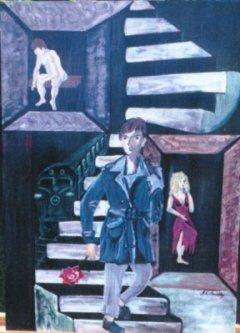
Famous Blue Raincoat
The song is deeply, almost embarrassingly, personal, an epistolary song about a wounded man who cannot help forgiving the friend. The overpowering emotion of the song inhibits another look at the lyrics, but Cohen’s autobiography immediately suggests problems with this common interpretation. Specifically, it is Cohen’s life that is being described both as the narrator and the other man. It is the friend in the song not “L. Cohen,” the narrator, who has a “famous blue raincoat.” But as the real Cohen noted in liner notes to the 1975 collection “The Best of Leonard Cohen,” the blue raincoat was his. “I had a good raincoat then, a Burberry I got in London in 1959….It hung more heroically when I took out the lining, and achieved glory when the frayed sleeves were repaired with a little leather.”
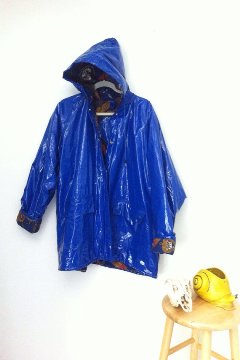
Blue Raincoat
In a 1994 BBC Radio Interview Cohen remarked: “The trouble with is that I've forgotten the actual triangle. Whether it was my own . . . of course. I always felt that there was an invisible male seducing the woman I was with; now, whether this one was incarnate or merely imaginary I don't remember. I've always had the sense that either I've been that figure in relation to another couple or there'd been a figure like that in relation to my marriage. I don't quite remember (but I did have this feeling that there was always a third party, sometimes me, sometimes another man, sometimes another woman).”
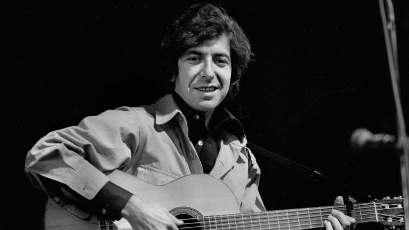
Leonard Cohen, 1970
"Famous Blue Raincoat" has captivated listeners ever since it first appeared on 1971's “Songs of Love and Hate”, though Cohen admits he's not happy with the lyrics. Ron Cornelius played guitar on this album and was Cohen's band leader for several years. Here's what he told Songfacts about this track: "We performed that song a lot of places. Typically gardens in Copenhagen, the Olympia Theater in Paris, the Vienna Opera House. We played that song a lot before it ever went to tape. We knew it was going to be big. We could see what the crowd did - you play the Royal Albert Hall, the crowd goes crazy, and you're really saying something there. If I had to pick a favorite from the album, it would probably be 'Famous Blue Raincoat.’ "
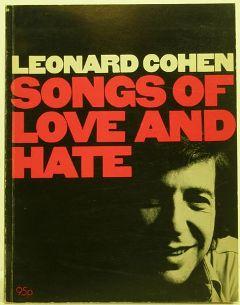
“Songs of Love and Hate”, album
The song is written in the key of a-minor. The time signature is 3/4, which is slightly uncommon in the rock and pop genre, but is used by Cohen in several other songs as well, like “Chelsea Hotel #2” or “Take This Waltz.” The tempo is fairly slow and the musical arrangement is very sparse. Cohen’s guitar is predominant and carries the song; additionally there are female background voices in the stanzas and the third bridge, and in some spots there is also a string section. The lyric itself is not written in a strict meter, but, especially during the stanzas, the speech rhythm is essentially dactylic, which fits well with a 3/4 time signature.
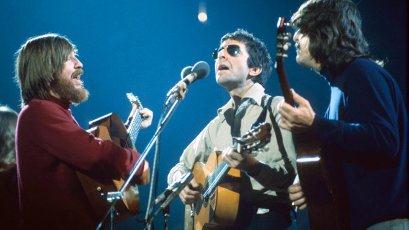
Bob Johnson, Leonard Cohen, Ron Cornelius at Royal Albert Hall
"It was a song I've never been satisfied with," Cohen said in 1994. "It's not that I've resisted an impressionistic approach to songwriting, but I've never felt that this one, that I really nailed the lyric. I'm ready to concede something to the mystery, but secretly I've always felt that there was something about the song that was unclear."
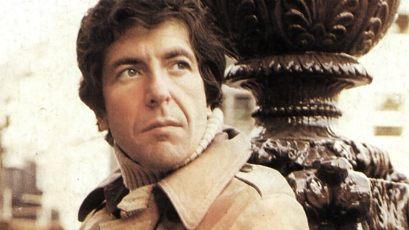
Leonard Cohen, 1971
Famous Blue Raincoat lyrics
It's four in the morning, the end of December I'm writing you now just to see if you're better New York is cold, but I like where I'm living There's music on Clinton street all through the evening I hear that you're building your little house deep in the desert You're living for nothing now I hope you're keeping some kind of record Yes, and Jane came by with a lock of your hair She said that you gave it to her That night that you planned to go clear Did you ever go clear? On the last time we saw you, you looked so much older Your famous blue raincoat was torn at the shoulder You'd been to the station to meet every train You came home without Lili Marlene You treated my woman to a flake of your life And when she came back she was nobody's wife Well; I see you there with a rose in your teeth One more thin gypsy thief Well I see Jane's awake She sends her regards And what can I tell you, my brother, my killer What can I possibly say I guess that I miss you, I guess I forgive you I'm glad you stood in my way If you ever come by here, for Jane or for me Well, your enemy is sleeping and his woman is free Yes, and thanks for the trouble you took from her eyes I thought it was there for good so I never tried And Jane came by with a lock of your hair She said that you gave it to her That night that you planned to go clear Sincerely, L. Cohen

Famous Blue Raincoat








